 Dupa ce a dat-o putin cu bata in balta pe tema “natiunii Moldova”, in precedenta analiza privind Romania si Marea Neagra, seful Stratfor, George Friedman, drege busuiocul in relatarea despre excursia sa geopolitica in Republica Moldova, a carei concluzie este ca cea mai buna solutie pentru Basarabia este unirea cu Romania. Ma bucur ca in analiza securistului american se regaseste si discursul geopolitic al lui Traian Basescu cat si chintesenta lucrarilor Civic Media si ale echipei Departamentului Externe al ziarului Ziua – cum ar fi AXA -, transmise regulat la Washington prin emisari de marca ai Statelor Unite, ca Jack Dyer Crouch II, Mark Taplin, Charles King, s.a. (In paranteza fie spus, dupa prima analiza nu m-am putut abtine si le-am scris baietilor de la Stratfor vreo doua despre “natiunea Moldova” 🙂 ) Voi reveni cu detalii.
Dupa ce a dat-o putin cu bata in balta pe tema “natiunii Moldova”, in precedenta analiza privind Romania si Marea Neagra, seful Stratfor, George Friedman, drege busuiocul in relatarea despre excursia sa geopolitica in Republica Moldova, a carei concluzie este ca cea mai buna solutie pentru Basarabia este unirea cu Romania. Ma bucur ca in analiza securistului american se regaseste si discursul geopolitic al lui Traian Basescu cat si chintesenta lucrarilor Civic Media si ale echipei Departamentului Externe al ziarului Ziua – cum ar fi AXA -, transmise regulat la Washington prin emisari de marca ai Statelor Unite, ca Jack Dyer Crouch II, Mark Taplin, Charles King, s.a. (In paranteza fie spus, dupa prima analiza nu m-am putut abtine si le-am scris baietilor de la Stratfor vreo doua despre “natiunea Moldova” 🙂 ) Voi reveni cu detalii.
Editor’s note: This is the fourth installment in a series of special reports that Dr. Friedman will write over the next few weeks as he travels to Turkey, Moldova, Romania, Ukraine and Poland. In this series, he will share his observations of the geopolitical imperatives in each country and conclude with reflections on his journey as a whole and options for the United States.
Geopolitical Journey, Part 4: Moldova
By George Friedman
Moldova is a country in need of explanation, two explanations in fact. First, there is the question of what kind of country Moldova is. Second, there is the question of why anyone should care. Oddly, I went to Moldova thinking I knew the answer to the second question but not the first. I came away unsure of either. Let’s begin with the second question: Why does Moldova matter?
The second article in this series, “Borderlands,” described the re-emergence of Russian regional power following the collapse of the Soviet Union in 1991. Russian national security is dependent on two countries that became independent following the collapse. Belarus is the buffer between Russia and Europe on the North European Plain. Ukraine is the buffer between Russia and the Carpathian Mountains. From the Russian point of view, dominating these countries is less important than Europe and the United States not dominating them. The Russians have achieved this and perhaps more.
Ukraine is Russia’s southwestern anchor and its Achilles’ heel. It is difficult for Russia to be secure without Ukraine both for economic and strategic reasons. Russia would be hard to defend if Ukraine were under the control of a hostile power. What Ukraine is to Russia, Moldova is to Ukraine. It is a salient that makes Ukraine difficult to defend, and if Ukraine can’t be defended Russia can’t be defended either. Or so my reasoning went at the beginning of my visit.
Moldova’s Strategic Position
I had strong historical arguments for this. My thinking was in line with Stalin’s. In 1939, the Soviets signed a nonaggression pact with Nazi Germany. One part of the agreement secretly partitioned Poland between Germany and the Soviet Union. Another part of the treaty secretly ceded Bessarabia to the Soviets, even though Bessarabia was part of Romania. The Soviets seized Bessarabia in 1940, renaming it the Moldavian Soviet Socialist Republic and changing its boundaries somewhat. Bessarabia can thus be thought of as Moldova’s predecessor.
There were many things the Soviets might have demanded from the Germans, but this, along with eastern Poland, was what they asked for. The reason was strategic:
- The eastern frontier of Bessarabia, and therefore of Romania, was less than 50 miles from the Soviet port of Odessa, the Soviet Union’s major outlet to the Black and Mediterranean seas.
- Romania was anchored in the east on the Dniester River. Should the Soviets decide to attack westward at any point, the Dniester was a formidable defensive line.
- By taking Bessarabia, the Soviets eliminated part of a salient from which Kiev could be threatened.
- The Soviets pushed their frontier west to the Prut River.
- The Soviets could interdict the Danube from Bessarabia. Close the Danube and European trade — in this case, German trade — would be damaged.
Stalin wanted to increase Ukraine’s security and increase Romania’s and the Danube basin’s vulnerability. As obscure as it was to the rest of the world, Bessarabia became a key piece on the chessboard between Hitler and Stalin, just as the Russian and Ottoman empires had sought after it before. Places that are of little interest to the rest of the world can be of great importance to great powers.
As it was, the bet didn’t pay off for Stalin, as Hitler attacked the Soviets and quickly seized all the regions conceded to them. But what Stalin lost in 1941, he regained in 1944. He had no intention of returning Bessarabia to Romania. He shifted some Moldovan territory to Ukraine and transferred some Ukrainian territory east of the Dniester River to Moldova. Since it was all under Soviet control, these were merely administrative shifts with no strategic significance at the time.
After the Soviet collapse, this territory became the Republic of Moldova. The portion east of the Dniester revolted with Russian support, and Moldova lost effective control of what was called Transdniestria. Moldova remained in control of the area between the Prut and Dniester rivers, for about 18 years a fairly insignificant region. Indeed, from a global point of view, Moldova was just a place on a map until 2010. The Ukrainian elections of 2010 brought what seems to be a pro-Russian government to power, repudiating the Orange Revolution. As I argued in “Borderlands,” this was a key step in the resurrection of Russian strategic power. Consequently, Moldova began to shift from being a piece of land between two rivers to being a strategic asset for both the Russians and any Western entity that might wish to contain or threaten Ukraine and therefore Russia.
Let me emphasize the idea that it “began to shift,” not that it is now a strategic asset. This is an unfolding process. Its importance depends on three things:
- the power of Russia;
- Russia’s power over Ukraine;
- a response from some Western entity.
These are all moving parts; none is in place. Moldova is therefore a place of emerging importance, as the saying goes. But however slow this process, this fairly obscure country has lost its insignificance, as it does whenever great powers clash in this part of the world.
This is why I wanted to visit Moldova: It seemed to be evolving into strategic terrain, and I wanted to understand it.
The Moldovan Identity
Moldova, of course, is not just a strategic chip. It is a place where people live, caught between their Romanian heritage and their Soviet past. It is a mistake to think of Moldova simply as part of the Romania that had been taken by the Soviets, which once freed from Soviet domination would simply rejoin Romania. Seventy years after the partition, Moldova has become more than a Romanian province, far from a Russian province and something less than a nation. This is where geopolitics and social reality begin to collide.
The Soviets brutalized Moldova. I had a conversation with a Moldovan journalist in which he described how he and his family had been deported in 1948 to Tomsk in Siberia. He put it almost casually; it was the common heritage of Moldovans. Stalin was concerned that the Moldovans would want to rejoin Romania, and although Romania was a Soviet satellite, Stalin didn’t want to take any chances. His solution, repeated many times in many places in the Soviet Union, was the deportation of the Romanian population, importing Russians, a small famine and the terror designed to break the Moldovan spirit.
The difference between Eastern Europe and the former republics of the Soviet Union was driven home to me in Moldova. In the Eastern European countries, the Soviet era is regarded as a nightmare and the Russians are deeply distrusted and feared to this day. In Moldova, there is genuine nostalgia for the Soviet period as there is in other parts of the former Soviet Union. Indeed, in Moldova communist rule didn’t end in 1992. The Party of Communists of the Republic of Moldova (PCRM), heir to the Communist Party that was banned, continued to rule Moldova until 2009. The PCRM was not ideologically communist; it had no real ideology at all. What it offered was continued ties to Russia and a sense of continuity to a country that preferred the familiar.
Bessarabia was a province of Romania, and Bessarabians generally spoke Romanian. In today’s Moldova, Romanian is not the only language spoken. As in most former Soviet republics, Russian is widely spoken, and not simply by Russians living there. For a large part of the Moldovan population, Russian is the preferred language. Older Moldovans were taught Russian in school and learned to use it in everyday life. But younger Moldovans also speak Russian, and signs are in Romanian and Russian. In addition, it was pointed out to me (I don’t speak any Romanian) that the Romanian spoken in Moldova is not quite the same as that spoken in Romania today. It has not evolved the same way and has an archaic cast to it. You can easily distinguish between a Romanian and a Moldovan speaking Romanian.
There is genuine tension about this. A member of our staff who lives in Romania accompanied us to Moldova. She told us about going into a store that sold chocolate. (Apparently, it was quite famous for its chocolates.) When she spoke, her Romanian was clearly distinguishable from the Moldovan variety and obviously from Russian. She was not served, was ignored for a while and then shuttled between lines. As she explained it, the Moldovans feel that Romanians look down on them, and so Moldovans resent them. Obviously, this is a single anecdote, but others spoke of this three-way tension between Romanians, Moldovan Romanian speakers and Russian speakers.
This split runs parallel to political fault lines. While there are those who want union with Romania, this is far from the dominant group. The real struggle is between those who back the communists and those who support an independent Moldova oriented toward the European Union and NATO. In broad terms, the communists’ strength is among the rural, poor and elderly. The pro-Western parties are handicapped by being divided into a series of parties that vary by personality more than ideology. This means that the government created after demonstrators routed the communists in 2009 is a highly fragmented coalition made more fragile by the complex interests, personalities and ambitions of each. The communists may not get a majority, but they don’t need as many coalition partners as do the pro-Western parties.
There will be an election Nov. 28. The country has billboards with various candidates all around and rallies throughout the country. Western nongovernmental organizations (NGOs) are there. Some are funded, we were told, by the American National Endowment for Democracy, others supported by NATO and so on. The Russians, too, have learned the NGO gambit from the West by watching the various color revolutions. Russian-supported NGOs are in the country, and as one journalist told me, they are serving wine and cheese to young people. That appears to be having an impact.
The real issue behind the complex politics is simply this: What is Moldova? There is consensus on what it is not: It is not going to be a province of Romania. But Moldova was a province of Romania and a Soviet Socialist Republic. What is it now? What does it mean to be a Moldovan? On this question I could see no consensus. There are nations that lack a state, like the Kurds. Moldova is a state that lacks a nation. Nation-building in Moldova is not so much about institutions but about creating a national consensus about the nation.
As in Romania, the pro-Western faction has a clear solution to this problem: membership in NATO and membership in the European Union. If they get this, they feel, they will then have a secure definition of a nation — a European country — and protection from the Russians and others who might threaten them. Romania sees membership in these organizations as a way to overcome its past. Moldova sees this as providing definition to their country. But where being European is a general goal in Romania, it is hotly disputed in Moldova, although what the communists want in practice, aside from power, is quite unclear.
And this is the core problem in Moldova. The pro-Western factions’ idea is to join the European Union and NATO and have that stamp a definition on the country. It does not take into account the powerful Communist Party with its Russian ties, nor does it take into account the substantial portion of the country that identifies with Russia rather than with the West. Some of the pro-Western parties, sensitive to this problem, have reached out to the Russians, either with visits to Moscow or indirectly. Committed to the Western option, they are trying to accommodate pro-Russian sentiment. But squaring the circle is not easy, and the basic divisions remain in place. In that sense, the country is in gridlock. Whoever wins this or succeeding elections governs a country that is significantly divided and with very different ideas about what the country should look like and who should govern it.
An Economy of Shadows
This is made even more difficult when you consider Moldova’s economic condition. It is said to be one of the poorest countries in Europe, if not the poorest. About 12 percent of its gross domestic product is provided by remittances from emigrants working in other European countries, some illegally. This has fallen from 19 percent, not by economic growth, but since the global recession cut remittances. Romania has begun a program of providing Moldovans with Romanian passports. This allows the Moldovans to travel and work anywhere in the European Union. They were already doing this illegally. Now the process of emigration and remittance has become formal. Some in Moldova charge that this is an attempt by Romania to undermine Moldova by encouraging emigration. But given the remittance situation, it is probably a lifeline.
People in Moldova and in Romania have told me that that the largest export of Moldova is women, who are lured into or willingly join (depending on who you might ask) the Moldovan diaspora to work as prostitutes. Some say (and I can’t verify) that Moldovan women constitute the largest number of prostitutes working in Europe’s legal brothels. This is a discussion for which there are few valid statistics and many opinions. Yet in talking to people, the claim does not seem controversial. This is a sign of a desperate country.
Consider this anecdote from a Saturday night spent walking the streets of Chisinau, the capital. The sidewalks of the main street filled with young people, from their late teens to their mid-twenties. I was told that there were no clubs for young people to party in, so they gather in the streets. That’s not all that odd: It reminds me of Queens Boulevard in New York during my high school years. What was odd was the way they clustered in groups of five to 15. At the center of each group was a small number of girls, one to three, all dressed stunningly compared to the boys, who were one cut above slobs. The oddity was the extent to which the boys outnumbered girls. I could never find out if the other girls were home with their parents or there was a shortage of young women. Regardless, my wife assured me the girls were not wearing cheap clothes; she estimated the boots alone ran into the hundreds of dollars.
I don’t quite know how to read this, but add to this the fact that there were bank branches up and down the main street. When we visited a small town north of the capital, it also had a string of bank branches lining the street. Bank branches are expensive to build and maintain. They need depositors to keep them going, and when you have seven competing banks in a small town that means there is money there. Certainly, the town didn’t look poor.
So, we have a paradox. The numbers say Moldova is extremely poor, yet there are lots of banks and well and expensively dressed young women. The young men all seemed to share my taste in clothes, which might come from poverty or indifference, so they don’t fit the analysis. But I am fairly confident in saying that the official statistics of Moldova and the economic reality are not in sync.

There are three possible explanations. The first is that remittances are flooding the country, from women or other expatriates, and that the banks are there to service the money coming in. The second is that there is a massive shadow economy that evades regulation, taxation and statistical analysis. The third explanation is that the capital and a few towns are fairly affluent while the rural areas are extraordinarily poor. (I saw some Soviet-era apartments that might confirm that.) I suspect the answer is all three are correct, explaining the split politics in the country.
The Republic of Moldova has a profound identity crisis, a deeply divided political system and an economy which does not have, as they say, full transparency. It is therefore difficult to think about it geopolitically.
Moldova and Strategy
From the Moldovan point of view, at least among the pro-Western factions, Moldova’s strategic problems begin and end with Transdniestria. They want to regain the east bank of the river. The region would have real benefits for Moldova, as it would be its industrial heartland, in relative terms at least. Like some other disputed territories in the former Soviet Union, however, it is the dispute, more than the strategic value of the territory, that is important. It is a rallying point, or at least an attempt to find one. It also a basis for pro-Western groups to attack pro-Russian groups since the Russians protect the breakaway region.
The Germans, who are getting close to the Russians, appear to be trying to facilitate negotiations regarding Transdniestria. The Russians may accommodate the Germans. But if they do, I doubt the outcome will deny the Russians control of the east bank of the Dniester. From the Russian point of view, hostile forces east of the Dniester could threaten Odessa, and they see no reason to leave the Dniester River regardless of how benign conditions appear right now. The Russian view, driven home by history, is that benign situations can turn malignant with remarkable speed.
There is an oddity here, of course. I am talking about Russian troops on the Dniester, but this in a country surrounded by Ukraine, not Russia. The Russians are supporting the Transdniestrian republic while the Ukrainians have not. Since 1992, the Ukrainians have not made an effective demand for the Russians to stop interfering in what is essentially a Ukrainian-Moldovan issue. This might be because the Ukrainians don’t want other lands that had been taken from Moldova and given to Ukraine put on the table as a bargaining chip. But I suspect the reason is simpler: Regardless of the collapse of the Soviet Union, the Russians are the ones concerned about things like a defensive river position while the Ukrainians see the matter with more detachment.
A Net Assessment
On a map, Moldova is valuable real estate. It is a region that in the hands of NATO or any other Western power could provide leverage against Russian power, and perhaps strengthen Ukraine’s desire to resist Russia. Putting NATO troops close to Odessa, a Ukrainian port Russians depend on, would cause the Russians to be cautious. The problem is that the Russians clearly understand this and are doing what they can to create a pro-Russian state in Moldova, or at least a state sufficiently unstable that no one can use it to threaten the Russians.
Moldova is caught between its Romanian roots and its Soviet past. It has not developed a national identity independent of these two poles. Moldova is a borderland-within-a-borderland. It is a place of foreign influences from all sides. But it is a place without a clear center. On one side, there is nostalgia for the good old days of the Soviet Union — which gives you a sense of how bad things are now for many Moldovans. On the other side is hope that the European Union and NATO will create and defend a nation that doesn’t exist.
If geopolitics were a theoretical game, then the logical move would be to integrate Moldova into NATO immediately and make it a member of the European Union. There are equally strange nations that are members of each. But geopolitics teaches that the foundation of national strategy is the existence of a nation. That may be obvious, but it is something that needs to be said. I came to Moldova looking in the borderland for a nation that might be a counter to Russian resurgence. I thought I had found the nation on the map. It turned out that while there were people living there, they were not a nation. What appeared promising on a map was very different in reality.
This is not to say that Moldova cannot evolve a sense of nationhood and identity. But such things take a long time to create and rarely emerge peacefully. In the meantime, powerful forces on all sides might make the creation of a Moldovan nation difficult if not impossible. This may well be a case of a state that could forge a nation if it were a member of the European Union and NATO, but the European Union is dealing with Ireland, and NATO has no appetite to confront Russia. This will be up to the Moldovans. It is not clear to me how much time history will give them to reach a consensus.
It is certainly not for me to advise the Moldovans, since I don’t share their fate. But given that I won’t be listened to anyway, I will offer this observation. Moldova was once part of Romania. It was once part of the Soviet Union. Moldova makes a great deal of sense as part of something. The Soviet Union is gone. Europe has more problems than it can handle already; it is not looking for more. Romania is still there. It is not a perfect solution, and certainly not one many Moldovans would welcome, but it is a solution, however imperfect.
I leave now for a place that has no doubt that it is a nation but is engaged in a debate as to what kind of nation it should be: Turkey.
Sursa: Geopolitical Journey, Part 4: Moldova | STRATFOR
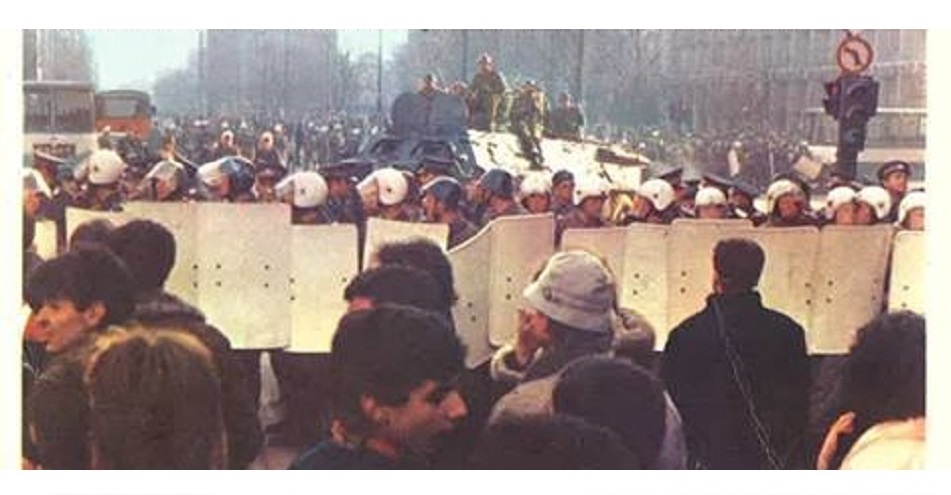
 November 19th, 2010
November 19th, 2010  VR
VR 
 Posted in
Posted in  Tags:
Tags: 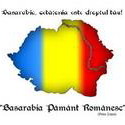






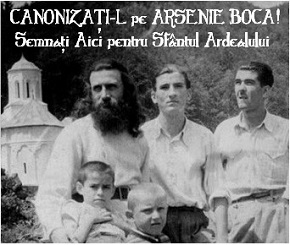


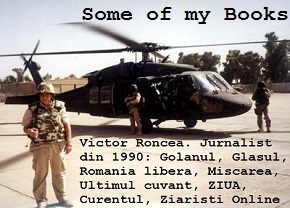
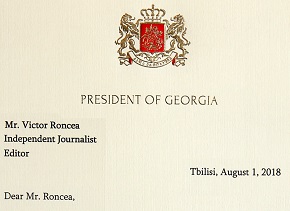

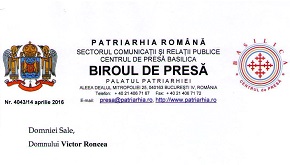

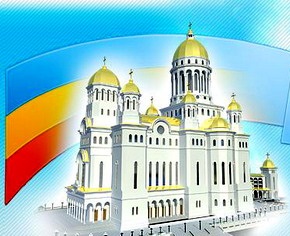

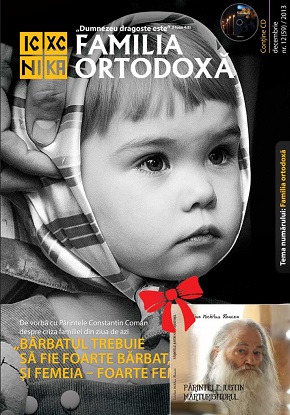




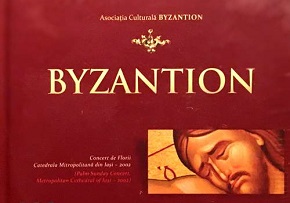







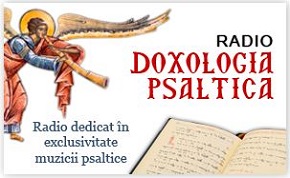





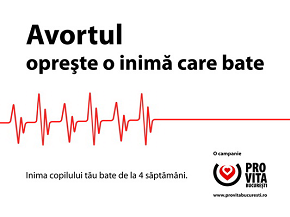
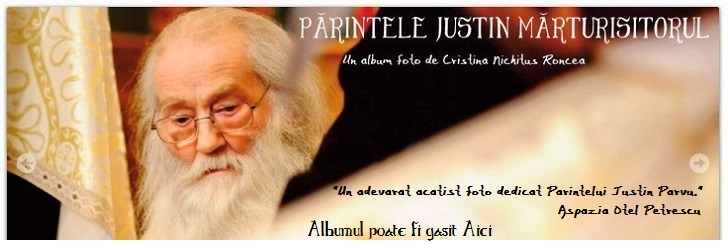
Este diferenta dintre a vedea din satelit o regiune si a pune piciorul acolo. Friedman nu e un securist rau, a inteles pana la urma despre ce e vorba. Desi nu e fan Romania, a inteles ca Romania este cheia pentru Basarabia. Fara Romania, R. Moldova nu e decat un lumpen-stat, ca sa folosesc un termen marxist 🙂
Corect :). O sa postez o analiza din 1915. Scrisa de niste patrioti anonimi din serviciile speciale de atunci. Se intituleaza “De ce ne trebuie Basarabia”. Preia din analizele lui Eminescu si merge, in timp, pana astazi. Spune tot. Ai sa vezi!